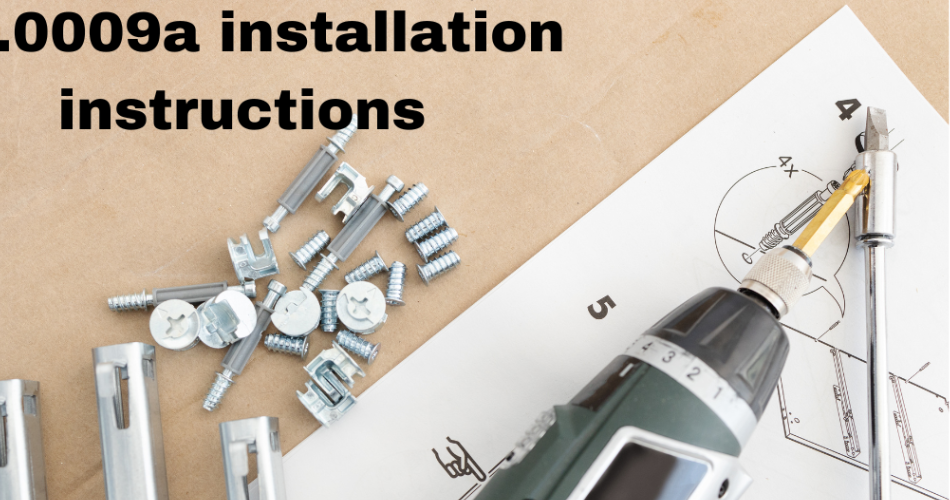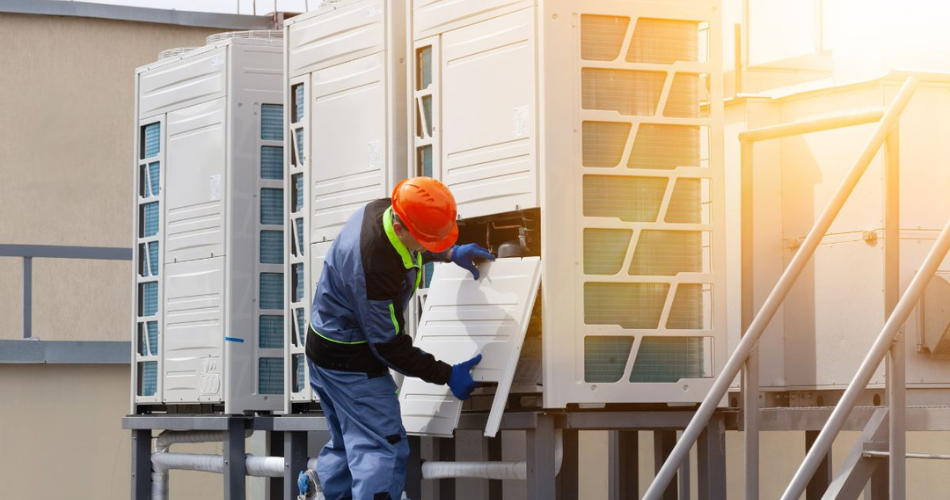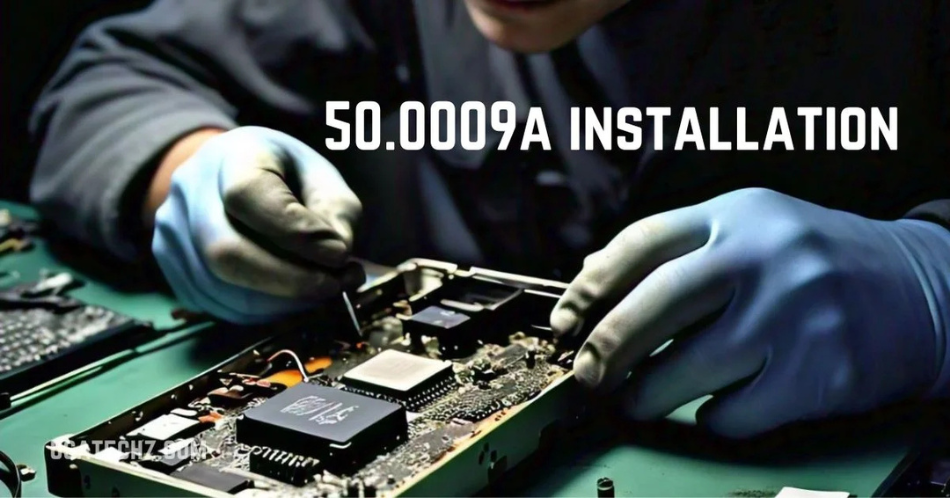Introduction to 50.0009A Installation
In today’s fast-paced, tech-driven world, precision and efficiency are more than just buzzwords—they are essential components of success. This is especially true when it comes to adhering to installation protocols, where even the smallest detail can have a significant impact. Among these protocols, the 50.0009A installation standard holds a pivotal role, yet it often flies under the radar in many technical sectors. Whether you’re a veteran in the field or just beginning your journey, a deep understanding of this specific standard is indispensable.
Mastering the intricacies of the 50.0009A standard not only ensures compliance and safety but also optimizes performance across the board. By adopting proven best practices, you can not only avoid costly mistakes but also streamline your workflows, leading to enhanced results.
In this guide, we’ll delve into the essentials of the 50.0009A installation protocol, covering key insights, expert tips, and common errors that can derail your project. Our objective is to equip you with the knowledge you need to execute flawless installations, while simultaneously boosting the overall quality of your work.
Importance of Best Practices in 50.0009A Installation

When it comes to installing 50.0009A equipment, following established best practices is crucial. Adhering to these guidelines ensures optimal performance and significantly reduces the likelihood of equipment malfunctions. A meticulous installation not only prevents future complications but also enhances workplace safety. Proper procedures mitigate risks associated with electrical hazards and system failures, both of which can have severe implications.
Moreover, implementing best practices fosters operational efficiency. A systematic approach minimizes errors, leading to considerable savings in time and resources. Documentation of the installation process plays a vital role in this regard. Maintaining clear and comprehensive records facilitates troubleshooting, supports future maintenance efforts, and ensures compliance with relevant regulatory standards.
Key Considerations Prior to 50.0009A Installation
Before embarking on the installation of the 50.0009A system, several critical factors should be evaluated. First and foremost, assess the installation site to ensure it is free of potential hazards and has ample space for both the installation and subsequent maintenance tasks.
It’s equally important to analyze how the 50.0009A system will interface with existing infrastructure. Ensuring compatibility is essential to avoid issues that could arise later; therefore, a thorough review of specifications is vital to prevent any mismatches.
Environmental conditions should not be overlooked either. Factors such as high humidity or temperature variations can adversely affect the performance and lifespan of the 50.0009A equipment. Lastly, familiarize yourself with local regulations or guidelines that could influence your installation process. Compliance with these regulations will not only streamline your installation efforts but also help avoid complications in the future.
Comprehensive Installation Guide for the 50.0009A Unit
To achieve a seamless installation of the 50.0009A unit, follow this detailed guide:
Assemble Essential Tools and Materials
Before beginning the installation, gather all necessary tools and materials to enhance efficiency and minimize interruptions. Key tools typically include screwdrivers, pliers, a drill, and a level. In addition, have specialized items like wiring connectors and the 50.0009A unit ready. Remember to equip yourself with personal protective gear, such as gloves and safety goggles, to ensure your safety during the process.
Prepare the Installation Area
A tidy and well-organized workspace is vital for a successful installation of the 50.0009A. Clear away any clutter and ensure the area is well-lit to facilitate precise connections and prevent errors. Organizing your tools for easy access will also reduce unnecessary movement, allowing you to focus on the installation.
Install the Base Plate and Mounting Bracket
Identify the ideal location for the base plate and mounting bracket. Use a level to ensure proper alignment prior to drilling. Depending on the surface material, select appropriate drill bits for the job. After drilling, securely attach the base plate, ensuring it is stable. A correctly installed base is essential for the unit’s long-term performance.
Wire and Connect Components
Wiring is a critical phase in the installation of the 50.0009A unit. Begin by organizing your wires and confirming they are of the correct length. Adhere to the manufacturer’s wiring diagram to ensure proper connections. This step is crucial, as incorrect wiring can lead to malfunctions or damage. Take your time to verify each connection, using high-quality connectors to ensure they are secure, but avoid overtightening.
Secure the Equipment and Perform a Test Run
With all components wired and positioned, it’s time to secure the equipment. Double-check that all screws and brackets are tightened adequately, ensuring the equipment is stable. Pay attention to any unusual sounds and closely monitor performance. Address any issues that arise immediately to ensure a successful installation.
Common Mistakes to Avoid When Installing the 50.0009A

Even experienced technicians can encounter pitfalls during the installation of the 50.0009A system. To ensure a smooth installation process, here are several mistakes to steer clear of:
Overlooking Safety Measures:
Prioritize safety by wearing the correct personal protective equipment (PPE) and adhering to established safety protocols. Neglecting these precautions can lead to significant accidents or injuries.
Rushing Through Preparation:
Inadequate preparation can lead to missing tools or improper setups. Dedicate sufficient time to prepare your workspace and gather all necessary equipment before beginning the installation.
Ignoring Manufacturer Guidelines:
Each installation comes with its own set of specific instructions. Bypassing steps or making assumptions about the process can jeopardize the system’s functionality. Always consult the manufacturer’s documentation.
Forgetting to Verify Connections:
Improperly connected or loose wires are a frequent source of issues. Ensure all connections are secure and correctly placed to avoid complications later on.
Skipping System Testing:
It’s crucial to conduct a thorough test after installation to confirm that the system operates as expected. Overlooking this step can result in more significant issues that may arise in the future.
Troubleshooting Tips for Common Installation Challenges

Encountering challenges during the installation of the 50.0009A is not unusual, but many issues can be quickly resolved. If problems arise, begin by reviewing your wiring connections; loose or incorrectly positioned wires are often to blame for malfunctioning systems. In the event of error codes, consult the manufacturer’s manual for guidance on troubleshooting.
Environmental Considerations:
Be aware that external conditions can affect system performance. Ensure your work area is clean and free from excessive dust or humidity, which can interfere with the installation process.
Alignment Issues:
If the equipment does not align correctly, revisit the installation of the base plate and make the necessary adjustments to ensure proper fit and function.
Seek Assistance When Needed:
If you encounter persistent or complex issues, don’t hesitate to reach out to industry forums or the manufacturer’s customer support. These resources can offer expert advice and troubleshooting solutions tailored to your specific situation.
Best Practices for Maintenance and Repair of the 50.0009A System

Following the successful installation of the 50.0009A system, implementing a robust maintenance strategy is crucial to enhance its durability and performance. Below are some essential practices to ensure your system operates at its best:
Regular Inspections
Establish a routine inspection schedule to identify any signs of wear or potential malfunctions. Early detection of issues can significantly reduce repair costs and prevent system downtime.
Routine Cleaning
Over time, dust and debris can accumulate, potentially hindering system performance. Make it a priority to clean the equipment regularly, ensuring it operates efficiently and effectively.
Performance Monitoring
Continuously track key performance metrics and address any discrepancies immediately. Proactive monitoring can help you mitigate larger issues before they escalate, preserving the integrity of your system.
Comprehensive Documentation
Keep meticulous records of maintenance activities and repairs performed. This documentation is vital for troubleshooting future issues and can provide insights into the system’s history and performance.
Stay Updated
Remain informed about any updates or recalls concerning the 50.0009A system. Manufacturers frequently provide critical information that can improve the reliability and safety of your equipment.
Conclusion
Achieving proficiency in the installation and maintenance of the 50.0009A system is vital for professionals in the industry. By adhering to these best practices, you can ensure that your installation is not only safe and efficient but also aligned with industry standards.
Taking the time to implement these strategies will lead to significant time and cost savings in the future, while also enhancing the overall quality of your projects. Whether you are an experienced technician or just beginning your career, mastering the 50.0009A installation and maintenance will elevate your work and set you up for success.
FAQs for 50.0009A Installation
1. What is the 50.0009A installation standard?
The 50.0009A installation standard outlines specific protocols and guidelines for the installation of certain equipment, ensuring compliance, safety, and optimal performance.
2. Why is following best practices essential for 50.0009A installation?
Adhering to best practices minimizes the risk of malfunctions, enhances workplace safety, and fosters operational efficiency by reducing errors and saving time and resources.
3. What tools are necessary for installing the 50.0009A unit?
Essential tools typically include screwdrivers, pliers, a drill, a level, wiring connectors, and personal protective equipment such as gloves and safety goggles.
4. How should I prepare the installation area?
Ensure the workspace is clean, well-organized, and well-lit. Remove any clutter and organize tools for easy access to minimize interruptions during installation.
5. What are common mistakes to avoid during installation?
Common mistakes include neglecting safety measures, rushing preparation, ignoring manufacturer guidelines, failing to verify connections, and skipping system testing.
6. What should I do if I encounter installation issues?
If issues arise, start by checking your wiring connections for loose or incorrect placements. Refer to the manufacturer’s manual for troubleshooting guidance, and consult customer support if necessary.
7. How often should I inspect and maintain the 50.0009A system?
Establish a routine inspection schedule based on the equipment’s usage and environmental conditions. Regular maintenance is crucial to identify wear or potential malfunctions early.
8. What maintenance practices should I follow for the 50.0009A system?
Essential maintenance practices include regular inspections, routine cleaning to prevent dust accumulation, performance monitoring, comprehensive documentation of maintenance activities, and staying updated on any manufacturer recalls or updates.
9. How can I ensure the longevity of the 50.0009A system?
To extend the lifespan of the system, perform regular maintenance, adhere to safety protocols, and promptly address any performance issues or discrepancies.
10. Where can I find additional resources for troubleshooting and support?
Additional resources can often be found in the manufacturer’s manual, industry forums, and customer support services provided by the manufacturer.
Stay informed with the latest news and updates on Newslinktimes
